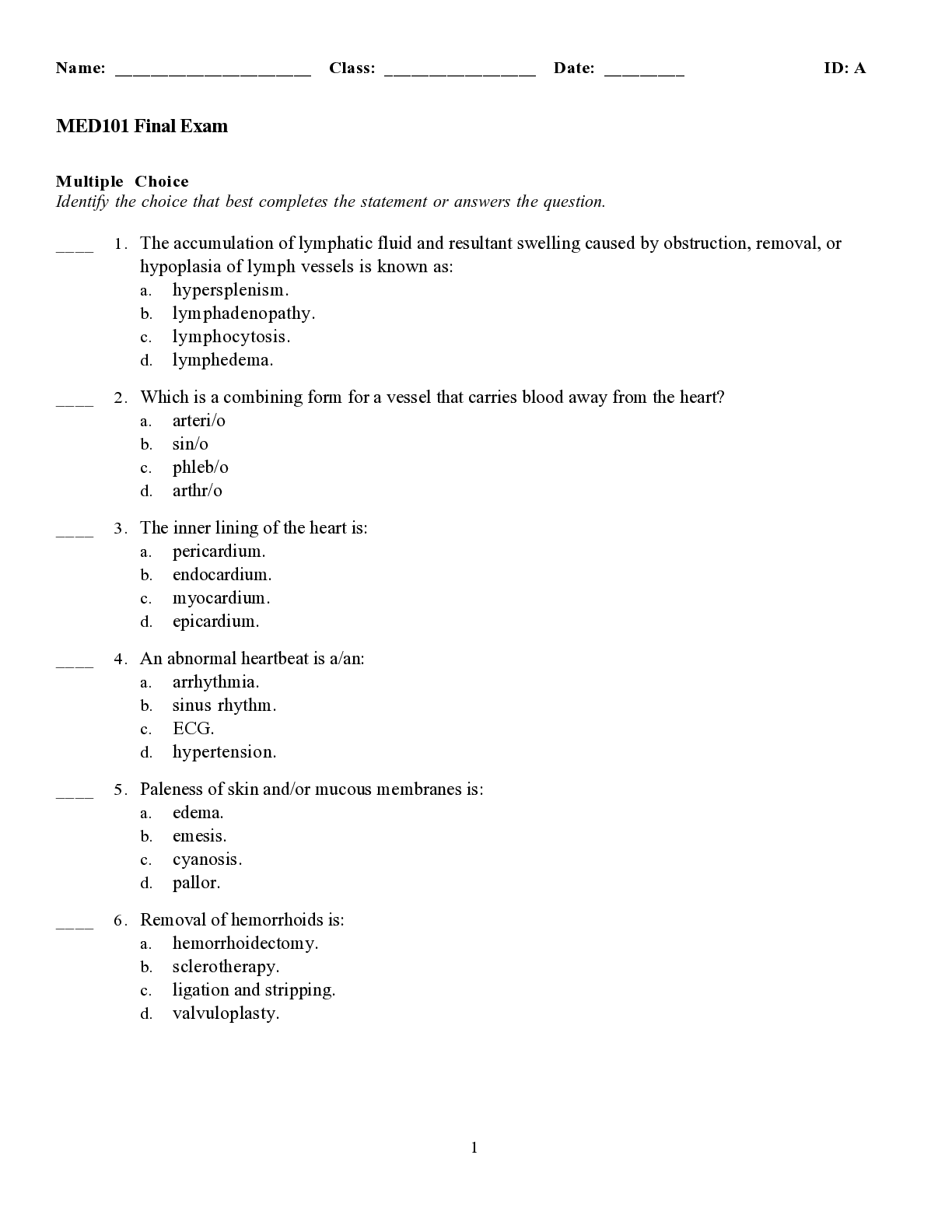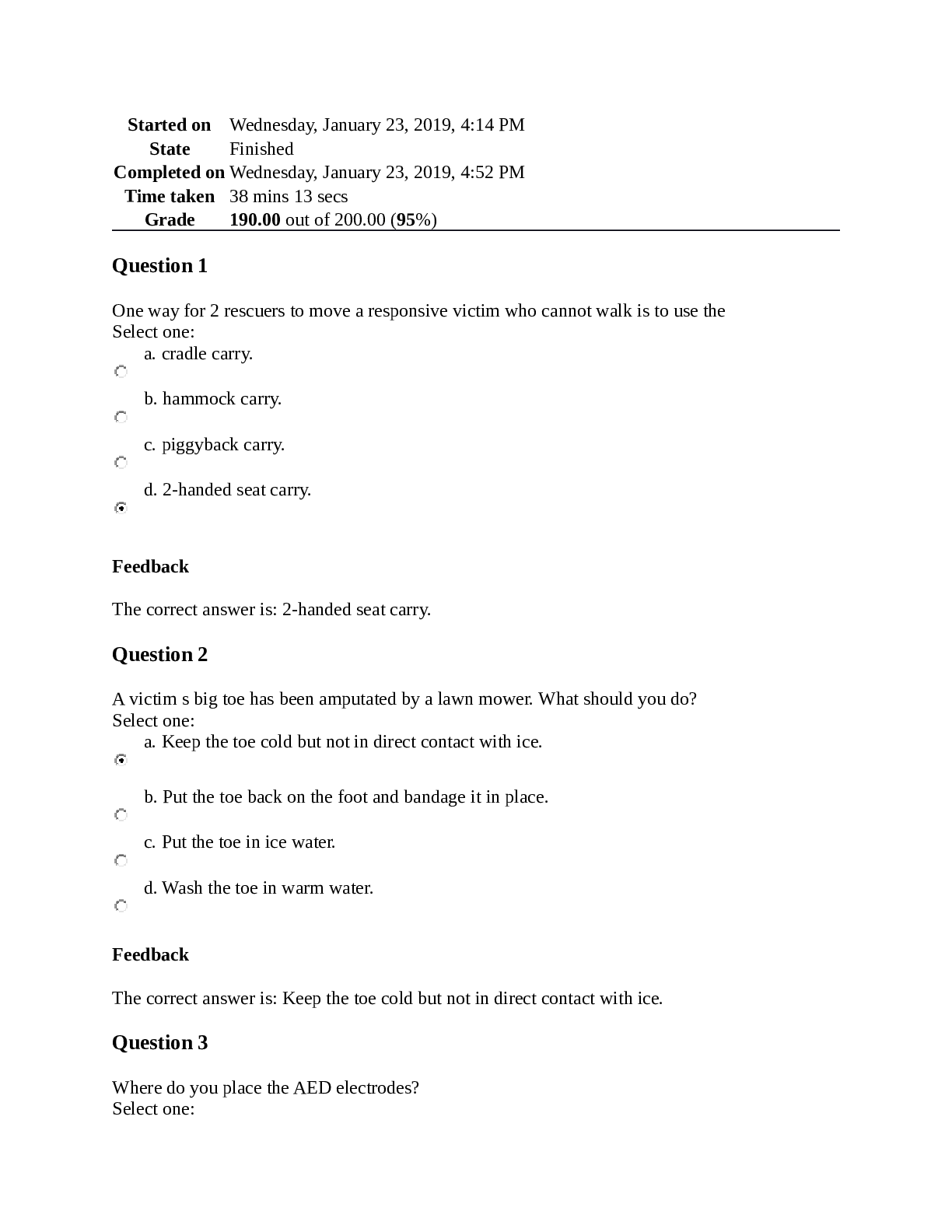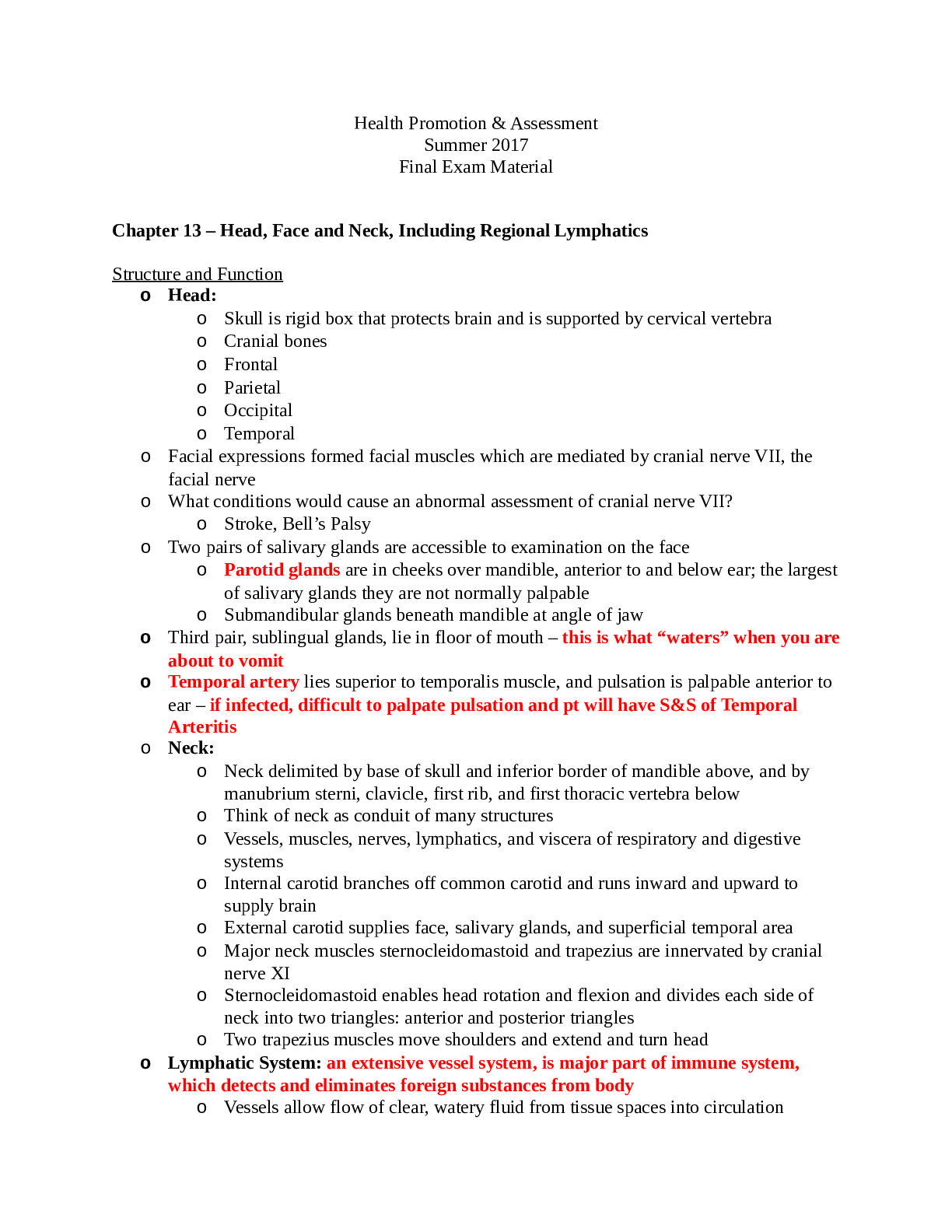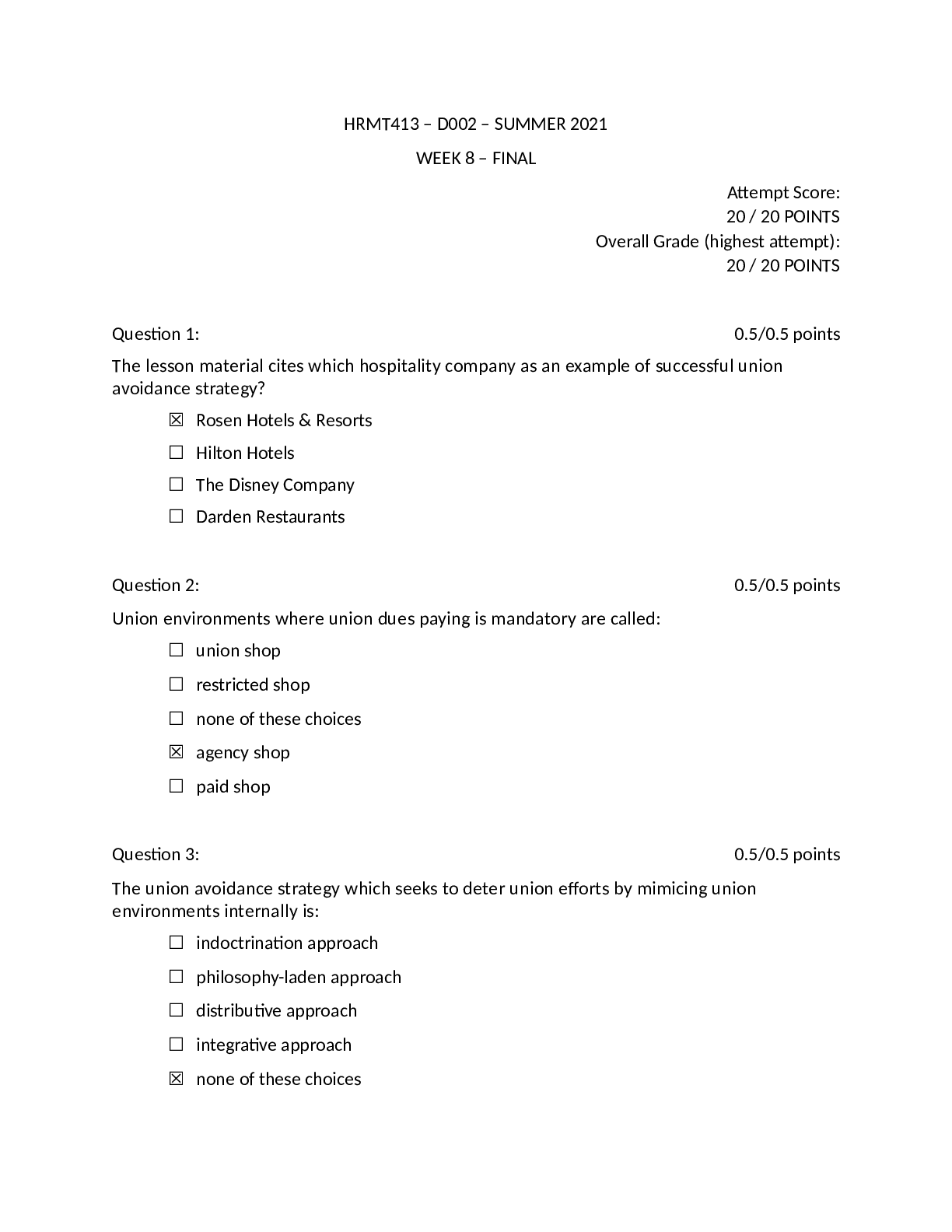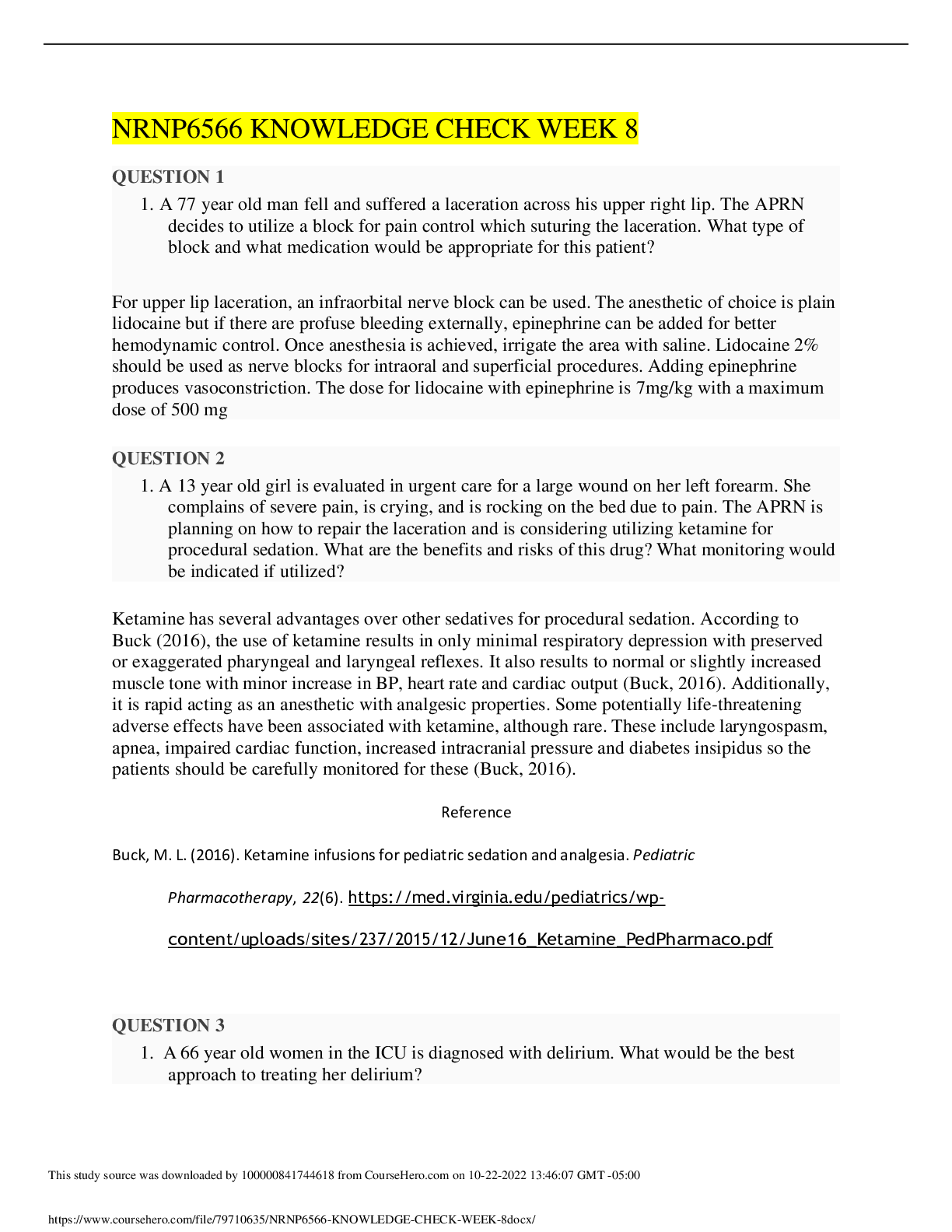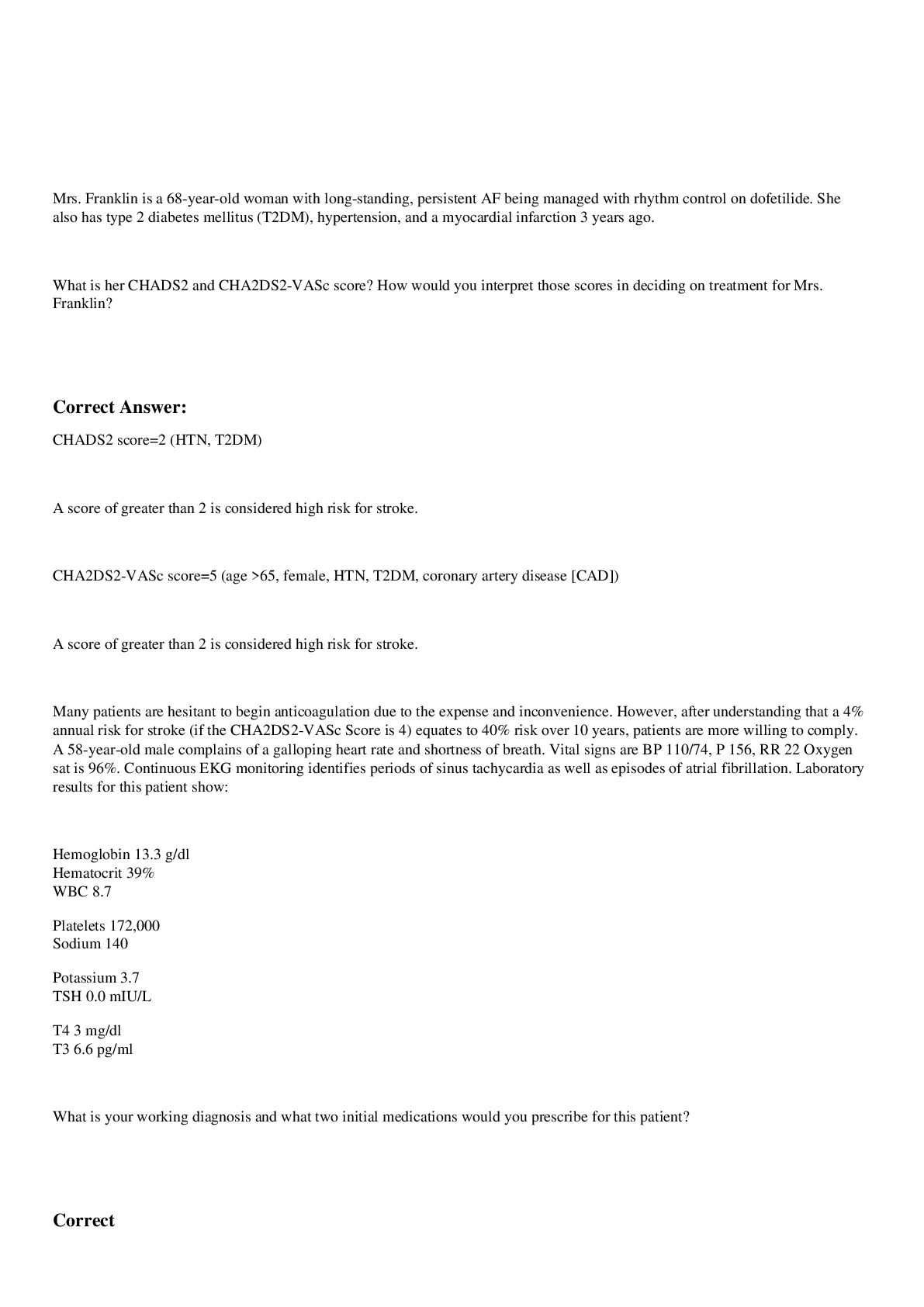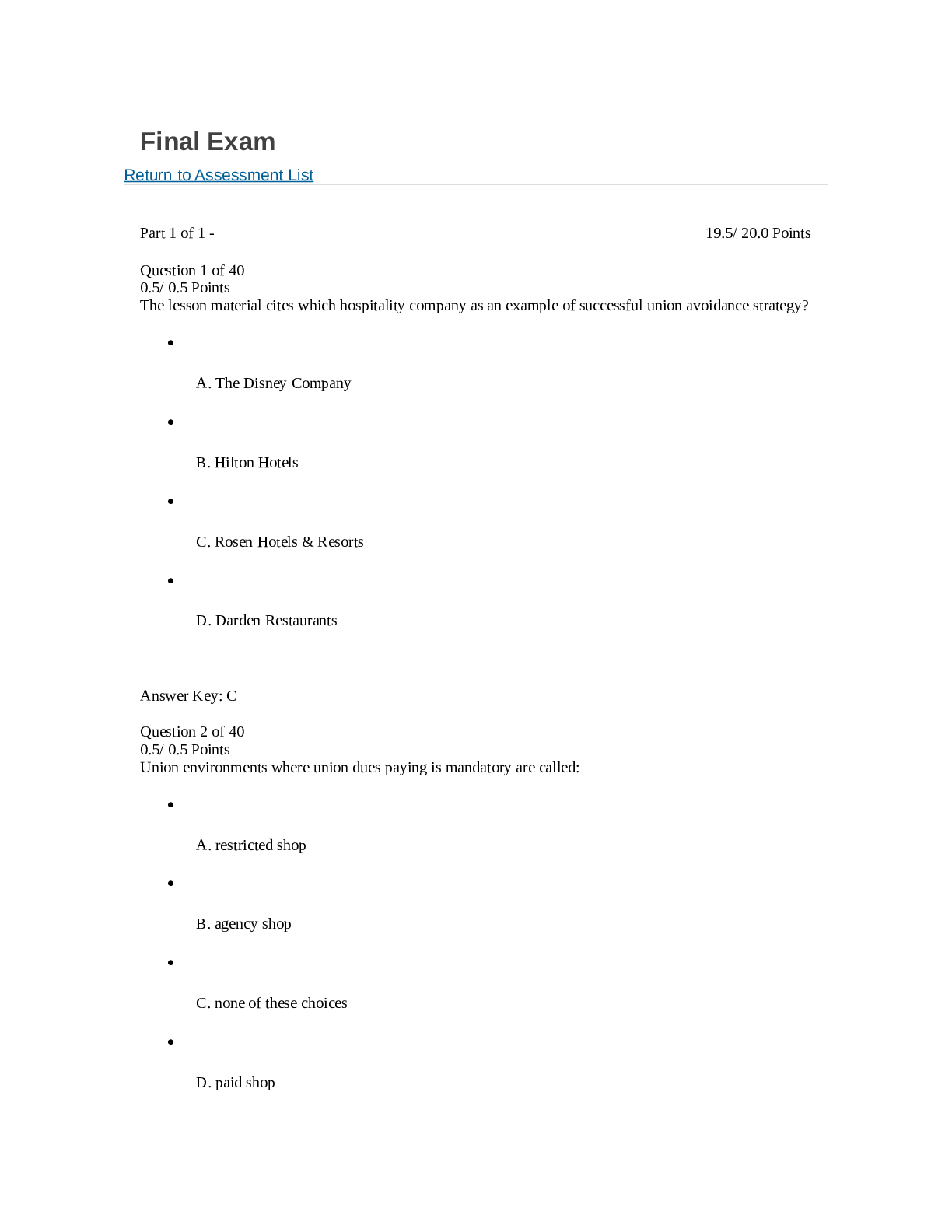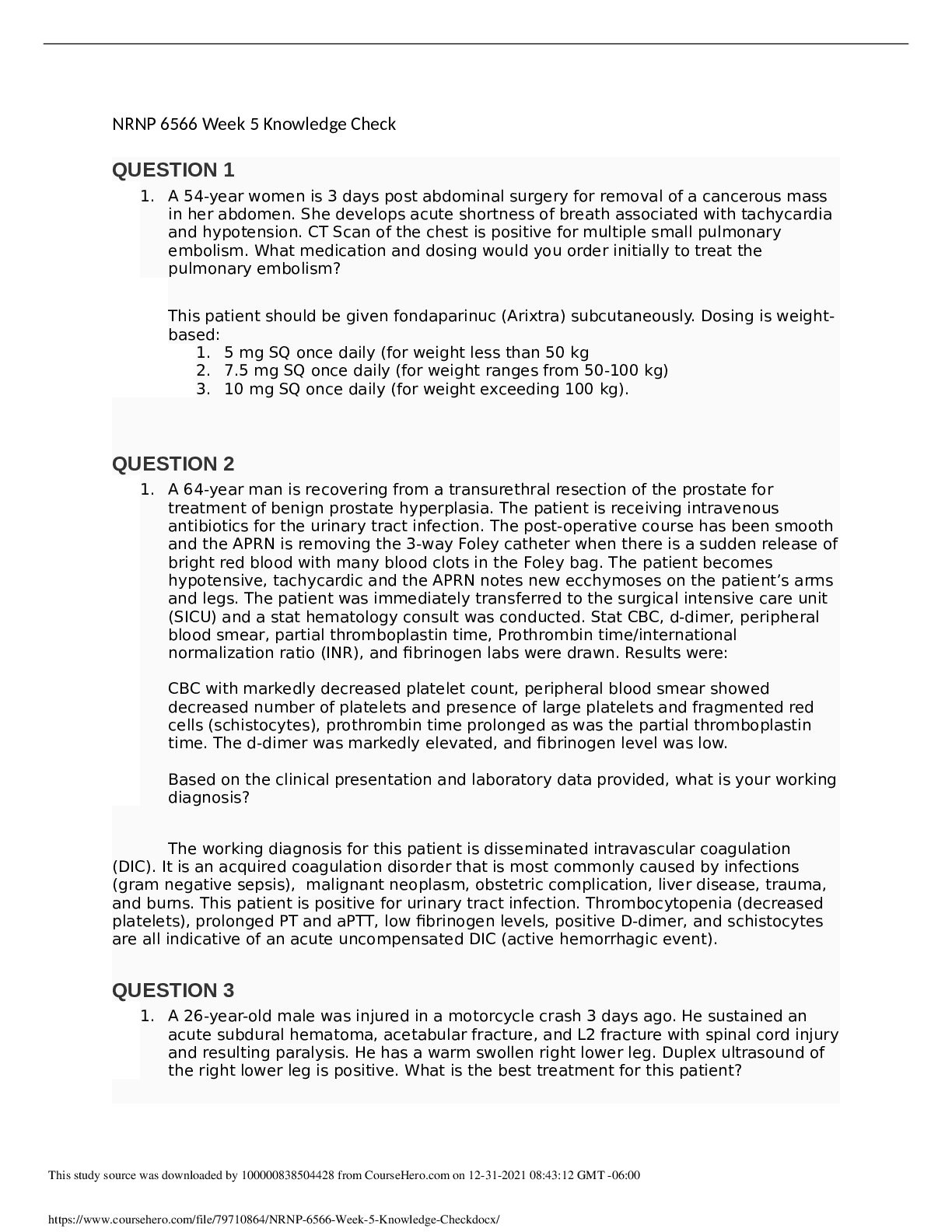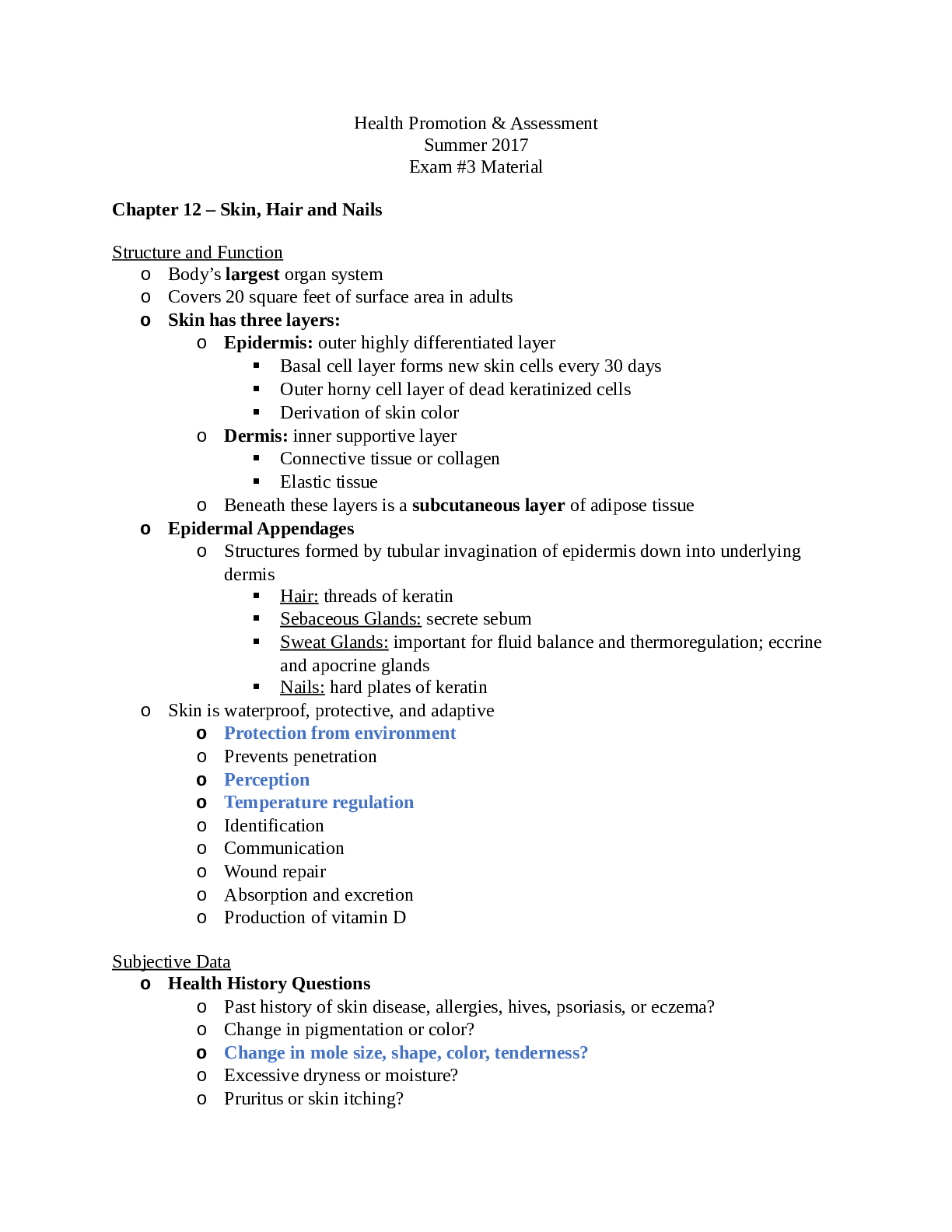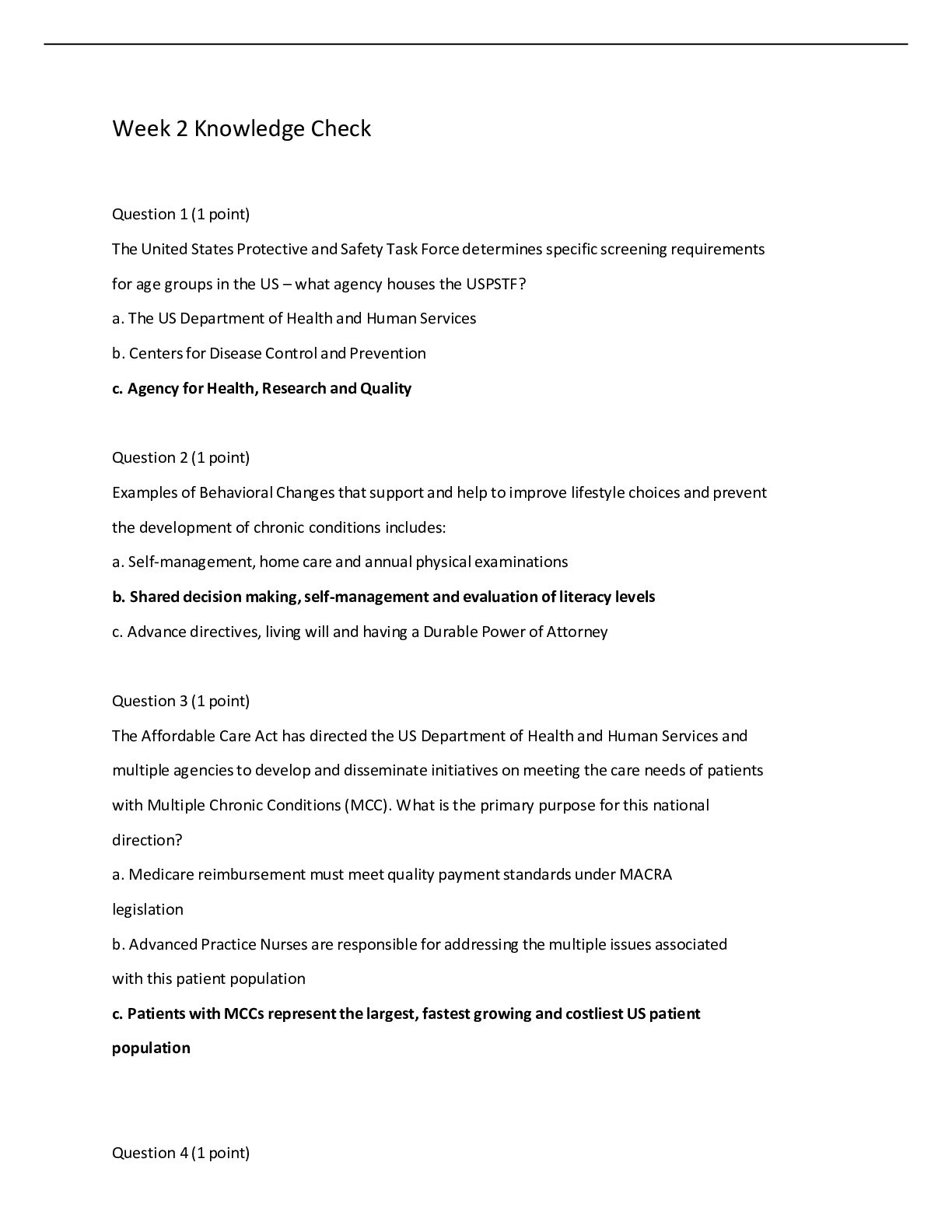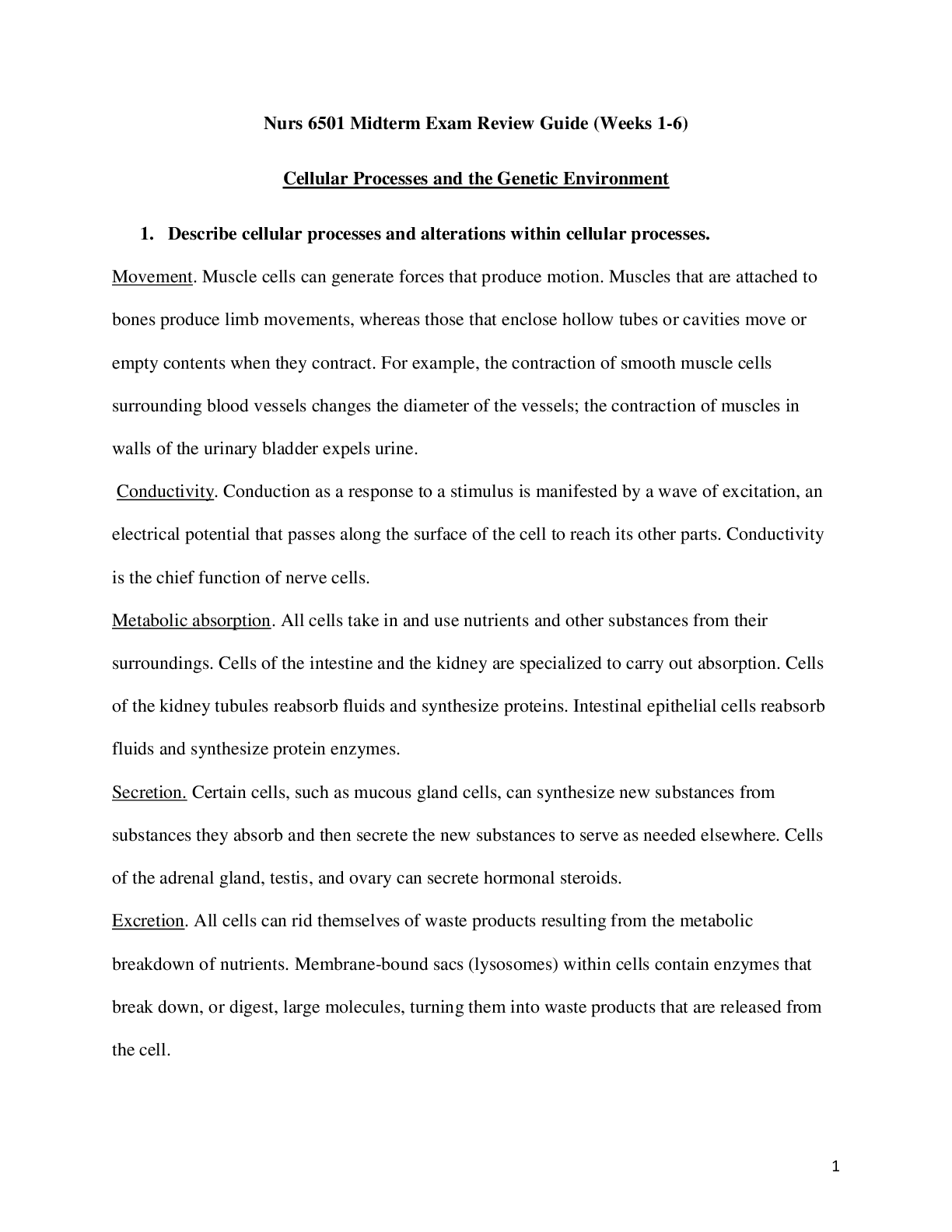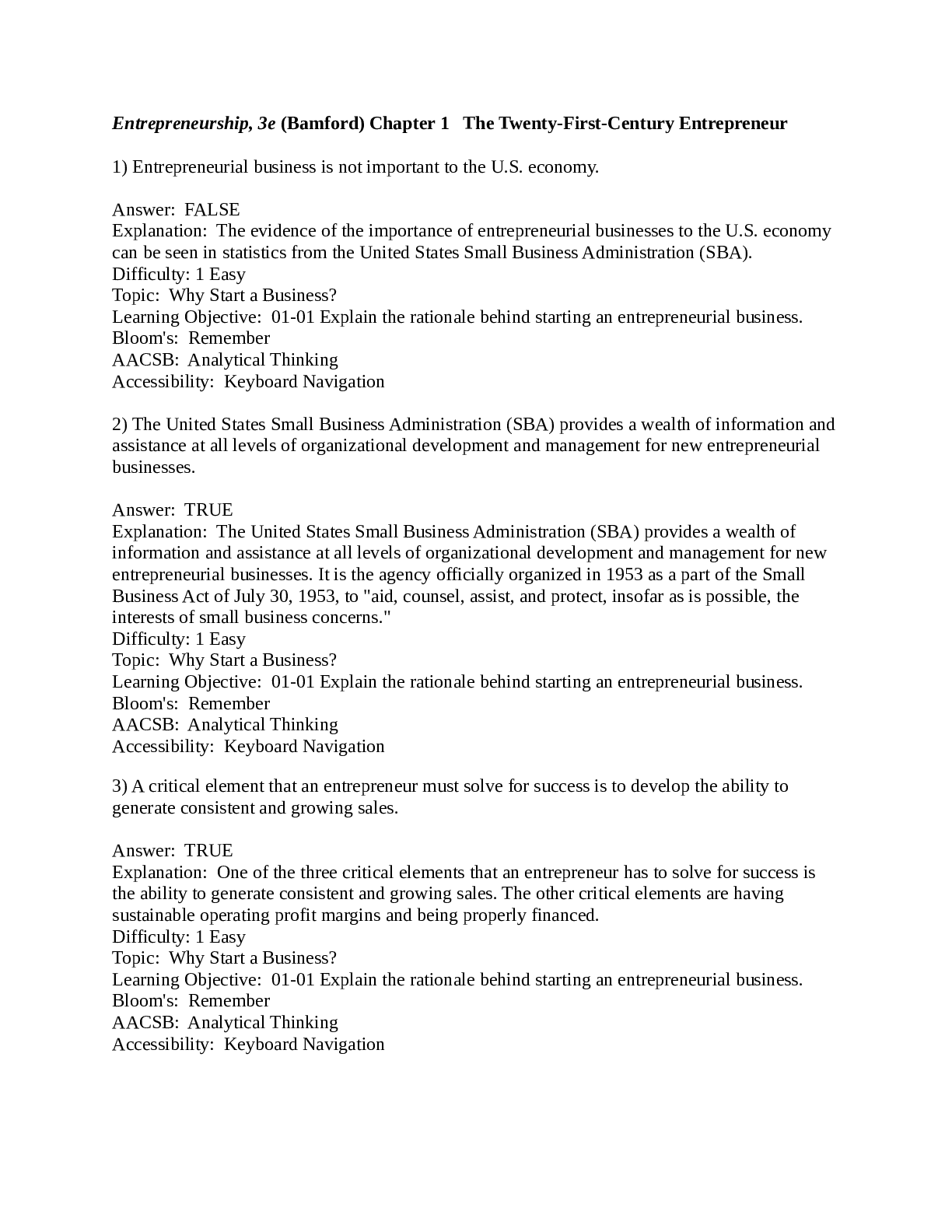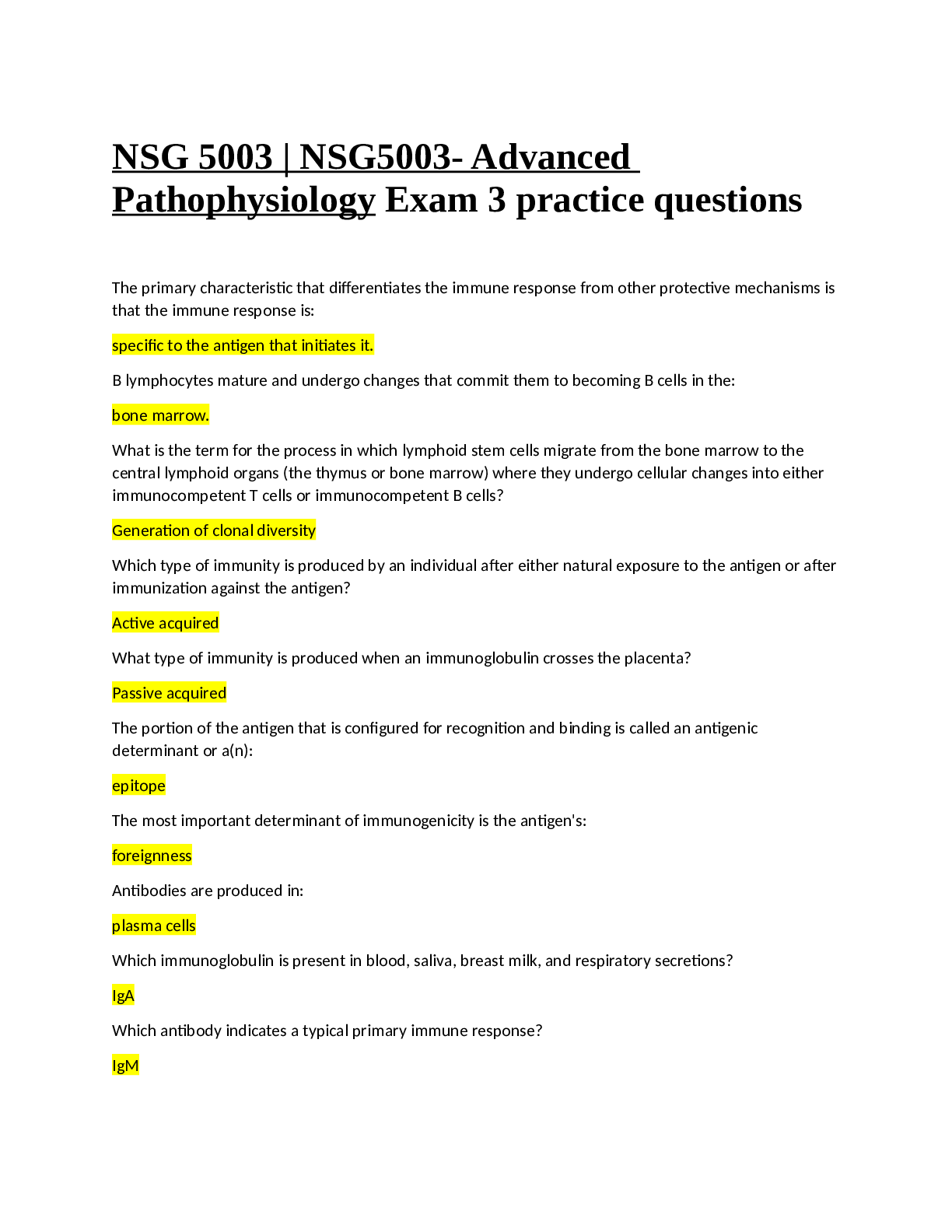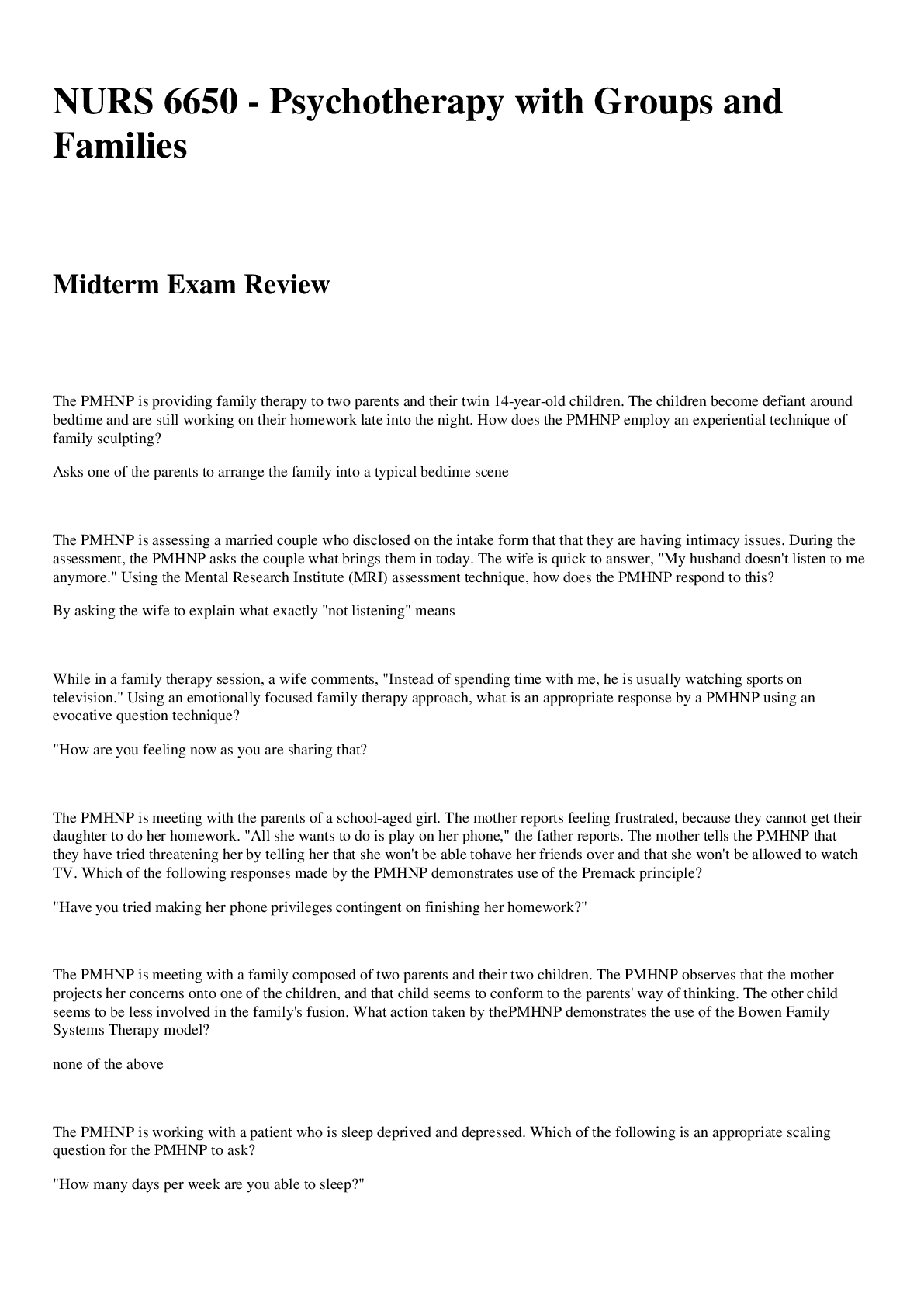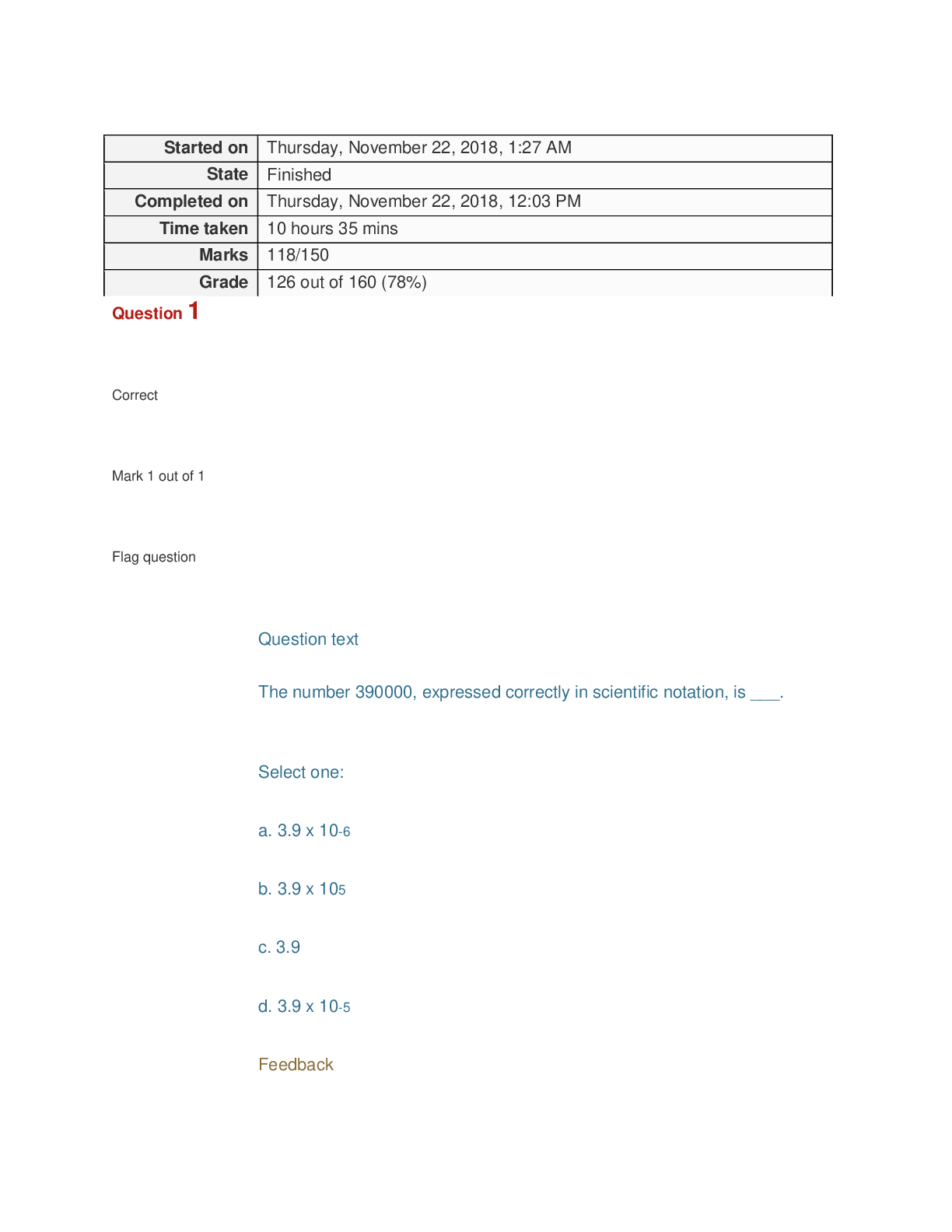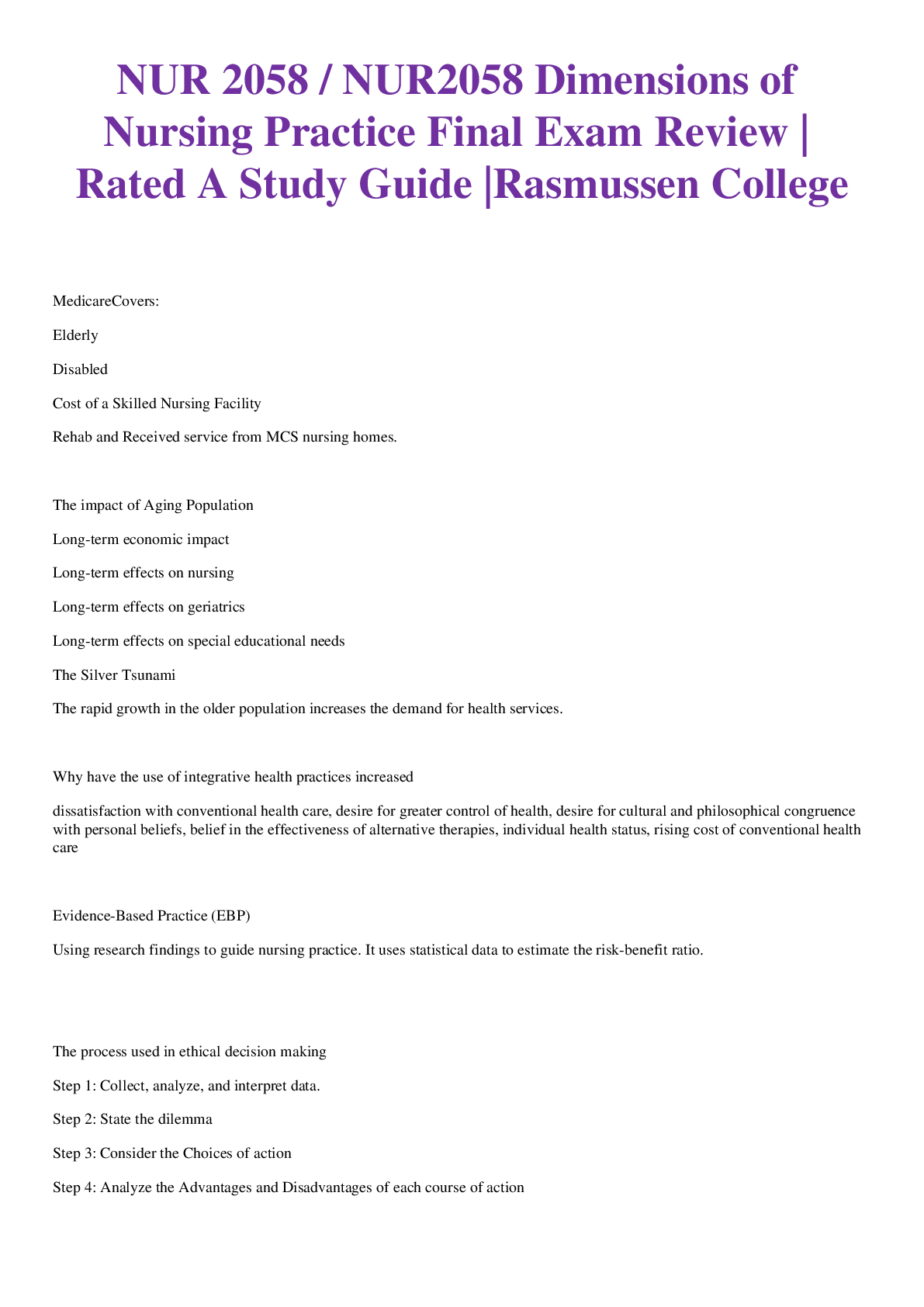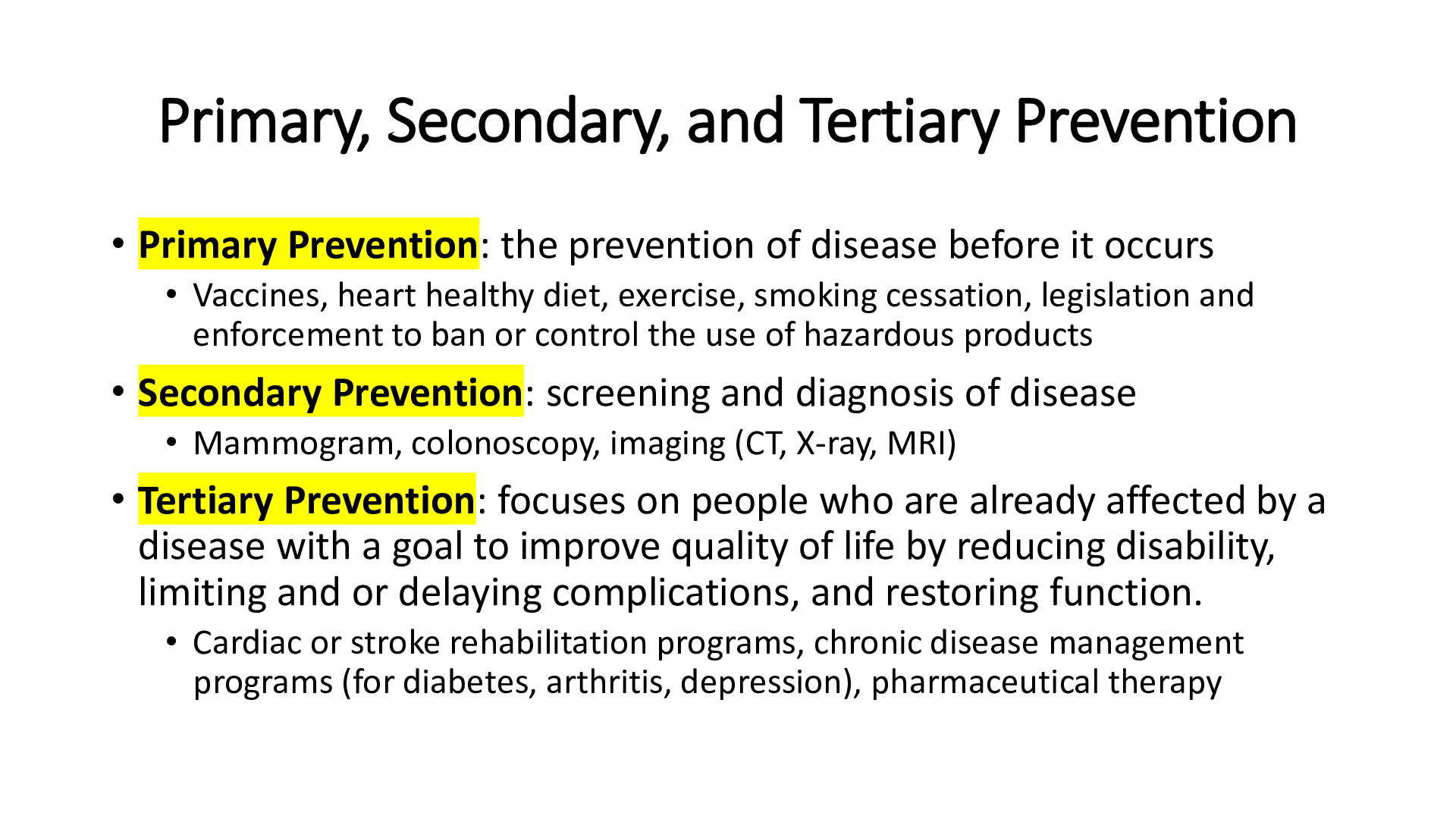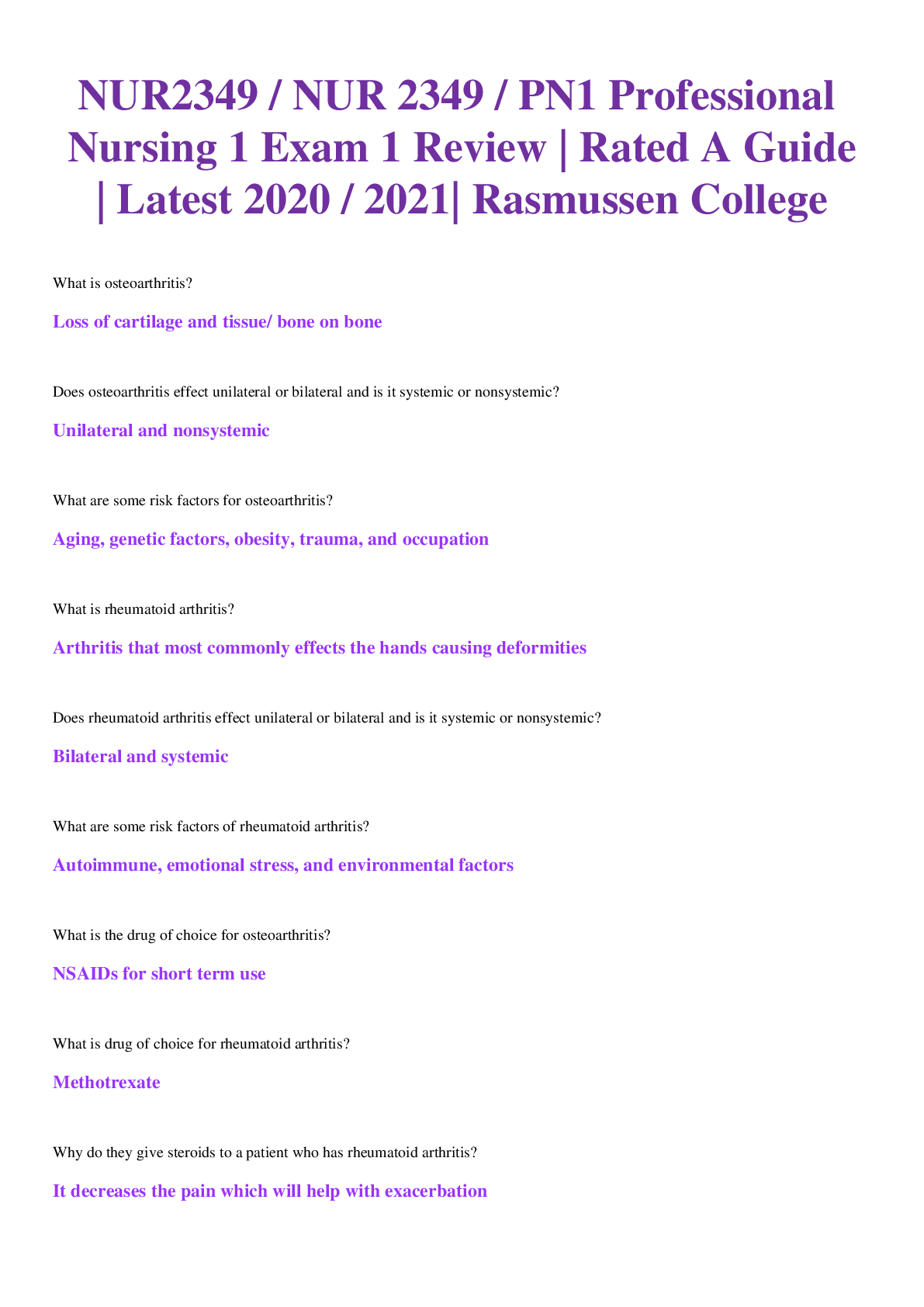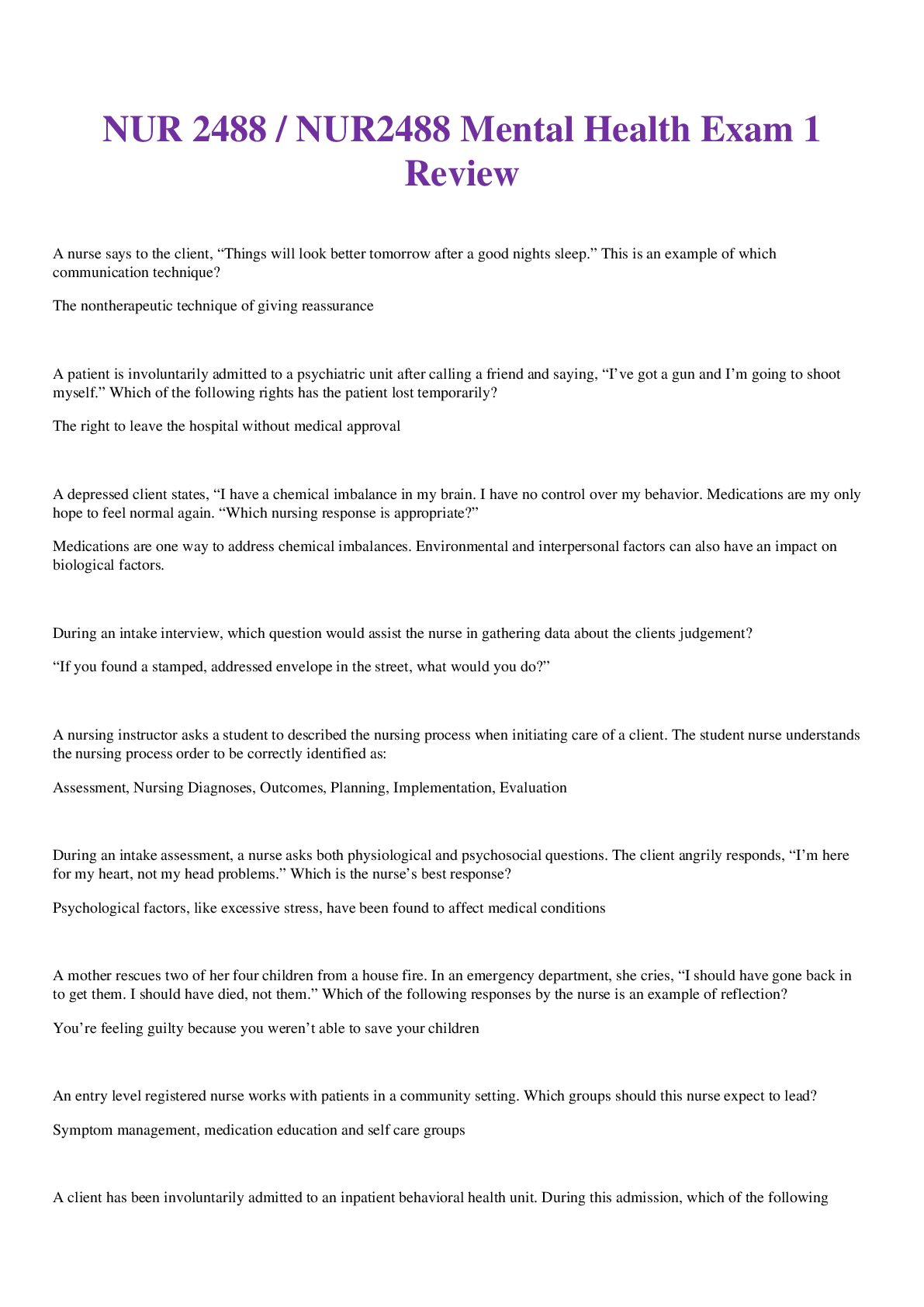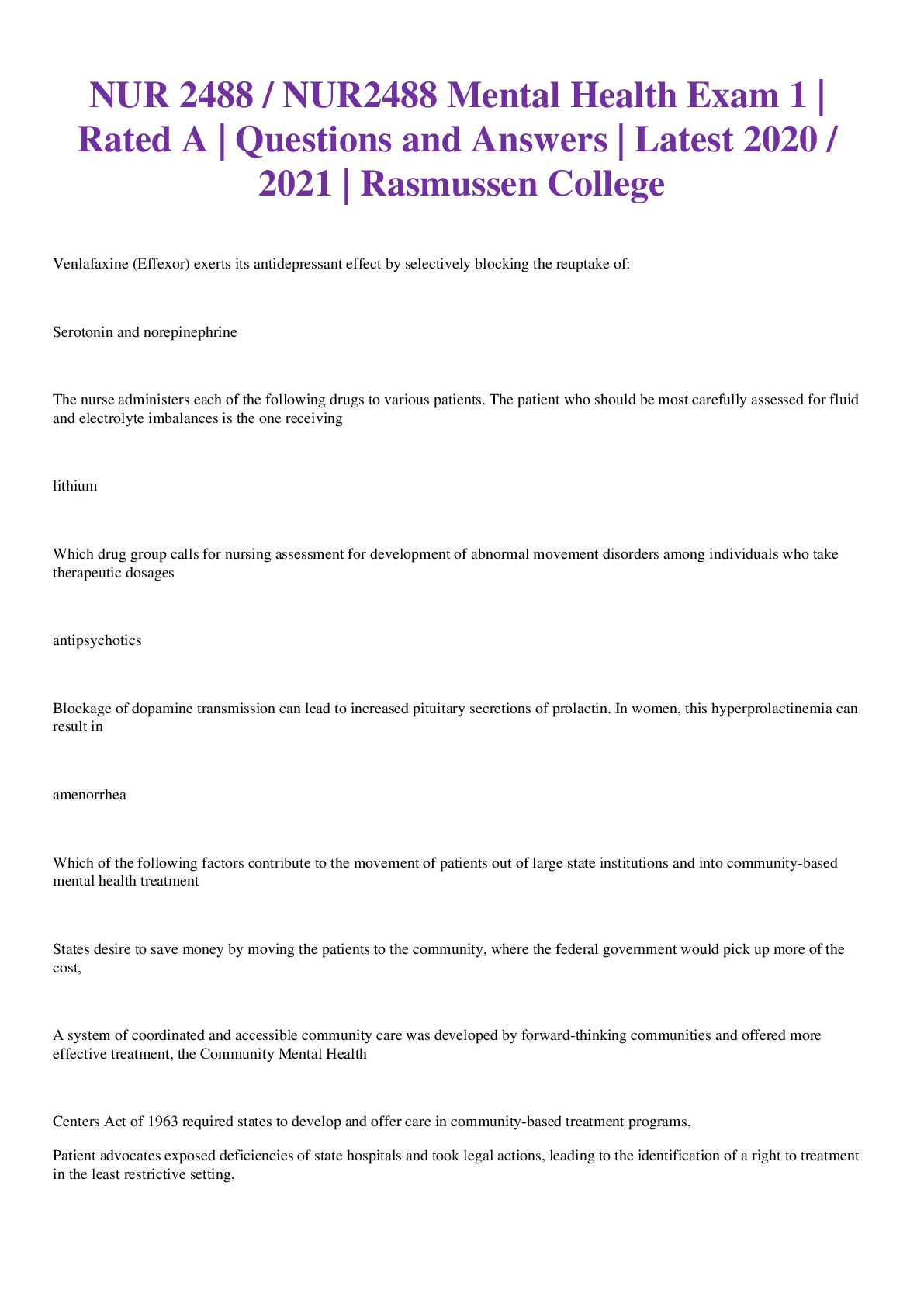*NURSING > EXAM REVIEW > NR 324 CHEM,Chapter 17 Acid Base, Fluid and Electrolytes (All)
NR 324 CHEM,Chapter 17 Acid Base, Fluid and Electrolytes
Document Content and Description Below
NR 324 CHEM,Chapter 17 Acid Base, Fluid and ElectrolytesACID BASE BALANCES Maintain a steady balance between acids and bases to achieve homeostasis Health problems lead to imbalance Diabete... s mellitus Chronic obstructive pulmonary disease (COPD) Kidney disease o The body normally maintains a steady balance between the acids produced during normal metabolism and the bases that neutralize and promote the excretion of the acids. o Because these acids alter the internal environment of the body, their regulation is necessary to maintain homeostasis and acid-base balance. o Many health problems may lead to acid-base imbalances. Patients with diabetes mellitus, COPD, and kidney disease frequently develop acid-base imbalances. o It is important to remember that an acid-base imbalance is not a disease but a manifestation of an underlying health problem. Always consider the possibility of acid-base imbalance in patients with serious illnesses. pH Measure of H+ ion concentration Blood is slightly alkaline at pH 7.35 to 7.45 <7.35 is acidosis >7.45 is alkalosis • The acidity or alkalinity of a solution depends on its hydrogen ion (H+ ) concentration. An increase in H+ concentration leads to acidity; a decrease leads to alkalinity. • Despite the fact that acids are produced by the body daily, the H+ concentration of body fluids is small and maintained within a narrow range to ensure optimal cell function. • Hydrogen ion concentration is usually expressed as a negative logarithm (symbolized as pH) rather than in milliequivalents. The use of the negative logarithm means that the lower the pH, the higher the H+ concentration. • The pH of a chemical solution may range from 1 to 14. A solution with a pH of 7 is considered neutral. An acid solution has a pH less than 7, and an alkaline solution has a pH greater than 7. • Blood is slightly alkaline (pH 7.35 to 7.45); yet if it drops below 7.35, the person has acidosis, even though the blood may never become truly acidic. If the blood pH is greater than 7.45, the person has alkalosis. Acid Base Regulation Metabolic processes produce acids that must be neutralized and excreted Regulatory mechanisms Buffers Respiratory system Renal system • Because norm [Show More]
Last updated: 1 year ago
Preview 1 out of 35 pages
.png)
Reviews( 0 )
Document information
Connected school, study & course
About the document
Uploaded On
Sep 25, 2021
Number of pages
35
Written in
Additional information
This document has been written for:
Uploaded
Sep 25, 2021
Downloads
0
Views
28


